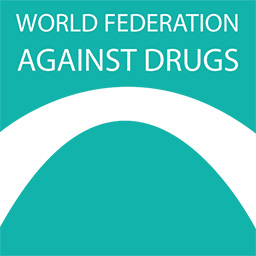During the 16 days of activism, which started on November 25th on the International Day for the Elimination of Violence Against Women and will end on December 10th on the International Day of Human Rights, the WFAD Gender Working Group is publishing statements every day highlighting issues faced by different specific populations while continuing to highlight the topic of this year: UNiTE! Activism to End Violence against Women and Girls
Gender-based violence and substance use are strongly interlinked. The negative health impact the experienced violence has on the survivor can lead to substance misuse. Additionally, substance use perpetrator often accelerates violence. Therefore, each statement, calling for preventing and eradicating gender-based violence, also calls for substance use prevention as well as sensitised and comorbid treatment.

Gender-based violence has an immense impact on a person’s self-worth and self-esteem and affects physical as well as mental health and may lead to self-harm, isolation, depression, and suicidal attempts (Council of Europe n.d.). On top of that, persons having been subjected to gender-based violence experience stigma. Research showcased that “stigma exacerbates the negative effects of violence and is associated with re-victimisation, as well as reduced likelihood of help-seeking” (Barnett, Maticka-Tyndale, and Kenya 2016).
Stigma “is a social process that leads to the marginalisation or labelling of individuals or groups [and] involves judging, blaming, discriminating, penalising, or shaming” (LDHR 2018). The stigma around gender-based [sexual] violence “arises from socially and culturally constructed norms around gender inequality, and expectations or perceptions of the role, behaviours and responsibilities of the traditional gender binaries in society” (Ibid).
Stigma manifests on different levels (Ibid)
- Individual
- Family
- Societal
- Structural and institutional
On an institutional level, stigma is manifested through discriminating laws, policies, and practices that are embedded in national and local institutions, governance, systems, and services, which can lead to a lack of availability and accessibility of a safe environment for the survivor to report the violence (Ibid).
Societal stigma is operated across societal levels through social orders. Survivors of gender-based violence face societal stigma by, for example, being blamed for the violence/assault or having to keep up the family honour and respect, which limits them to speak up or report the violence (Perrin 2019). [The fear of] Stigmatisation, discrimination, and exclusion from society, can lead to serious mental health issues, undermines confidence, and can deprive survivors of accessing medical and social services. In some societies, social stigma can lead to a serious threat to the survivor’s life (LDHR 2018).
Moreover, societal stigma can enhance internalised stigma. Internalised stigma can further isolate the survivor, create the feeling of shame, guilt or “the belief that they do not deserve support”, which can make them attempt to “hide their [experience] in anticipation of status loss and discrimination” (Barnett, Maticka-Tyndale, and Kenya 2016). Self-stigma can also create an identity attributed by others, establish a feeling of uselessness, lowered self-esteem, and self-efficiency.
Stigma can be overcome but needs to be tackled on all levels, including institutional, social, and self-stigma simultaneously. Only then, a better response to gender-based violence can be created and it can lead to the prevention of violence. Hence, actions are required, including awareness-raising efforts, reviewing of policies, procedures, and practices, providing training to policymakers, health care providers, communities, etc., establishing safe services for survivors to report, and providing psychological, social, and medical support while removing gender barriers to access institutions, etc. Gender-based violence cannot be prevented without tackling stigma and they require action now.
References
Council of Europe. n.d. What causes gender-based violence? https://www.coe.int/en/web/gender-matters/why-is-gender-based-violence-a-problem-
Lawyers and Doctors for Human Rights (LDHR). 2018. Understanding Gender, Gender-Based Violence, and Stigma in Syrian Communities: Mapping of three different Syrian communities by Syrian First Responders. http://ldhrights.org/en/wp-content/uploads/2018/12/LDHR-Gender-GBV-and-Stigma-Mapping-Report-FINAL.pdf
Perrin, N., Marsh, M., Clough, A. et al. 2019. Social norms and beliefs about gender-based violence scale: a measure for use with gender-based violence prevention programs in low-resource and humanitarian settings. Confl Health 13, 6 https://conflictandhealth.biomedcentral.com/articles/10.1186/s13031-019-0189-x


Leave a Reply
You must be logged in to post a comment.